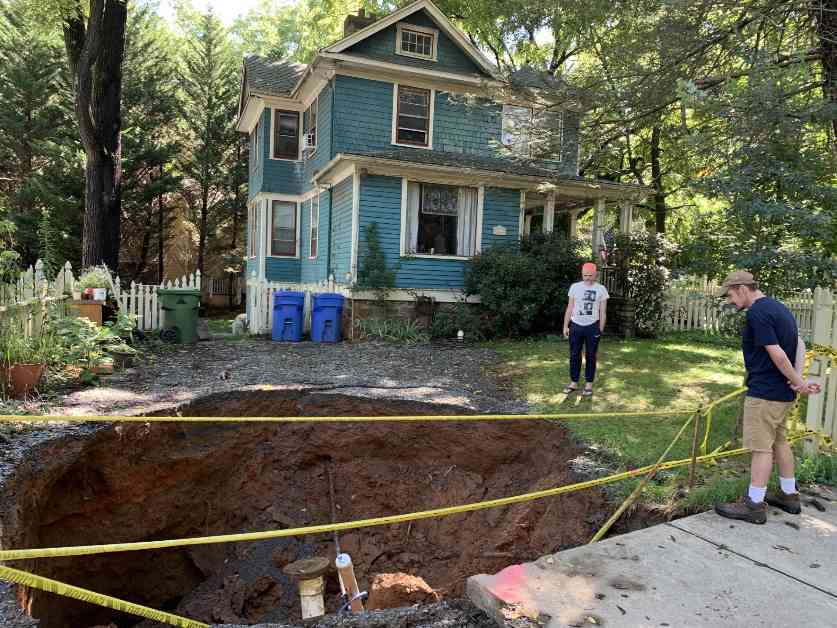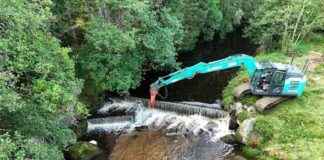Sinkholes: A Quirky Fascination
In Asheville, North Carolina, there is a group of over 3,400 individuals who share a peculiar interest in sinkholes. Lauren Bacchus, a member of the Asheville Sinkhole Group, proudly wears a T-shirt that reads, “For the love of all things holey.” While acknowledging the potential dangers and damages associated with sinkholes, Bacchus finds them fascinating due to their reminder of the impermanence of human-made structures. She describes the feeling of excitement, curiosity, and mystery that sinkholes evoke, emphasizing how they reveal the unpredictable nature of the ground beneath our feet.
Sinkholes have become a topic of renewed interest in Asheville, particularly after a recent pit appeared near a storm-damaged area in the city. The increase in sinkholes in the region, attributed to factors like flooding and busted pipes caused by extreme weather events, has kept road crews busy. Kim Miller, a spokesperson for the city, noted the impact of this uptick on staff workload, highlighting the challenges posed by these sudden geological phenomena.
The Formation and Impact of Sinkholes
Sinkholes, varying in size from a few inches to hundreds of feet wide and deep, can emerge rapidly or develop over extended periods. While natural factors can contribute to their formation, human activities such as construction fill and alterations to the landscape play a significant role in their occurrence. The consequences of sinkholes, both in terms of financial costs and safety risks, have been substantial, with reports suggesting that they may have cost the country over $300 million annually in recent years.
Notably, sinkholes have been a particularly prevalent issue in states like Florida, Tennessee, Kentucky, and Pennsylvania, where the nature of the bedrock increases the susceptibility to these geological disruptions. The frequency of sinkholes is expected to rise as climate change leads to more intense rain events and storms, further exacerbating the conditions that contribute to sinkhole formation. Despite the challenges and risks associated with sinkholes, there is a sense of wonder and fascination surrounding these natural phenomena, prompting individuals like Bacchus to explore and contemplate the mysteries they hold.
Exploring Prehistoric Remnants
In Gray, Tennessee, the Gray Fossil Site offers a unique glimpse into the prehistoric world, with scientists unearthing fossils dating back millions of years. The site, once a watering hole for ancient creatures, now serves as a treasure trove of information about past climates and biodiversity. Fossils from the Pliocene epoch, which ended approximately 2.6 million years ago, provide valuable insights into a time when Earth was significantly warmer than it is today.
The discoveries at the Gray Fossil Site not only shed light on the ancient past but also offer clues about the potential impacts of future climate change. By studying the remnants of a bygone era, researchers can better understand the evolution of ecosystems and species in response to environmental changes. Despite the challenges posed by sinkholes and other geological phenomena, sites like Gray Fossil provide a window into the past, allowing us to appreciate the interconnectedness of Earth’s history and future.














